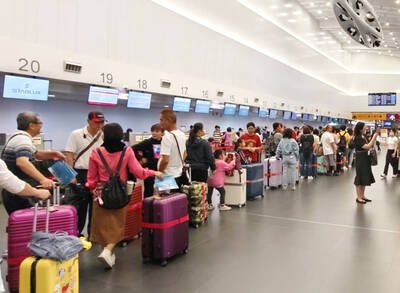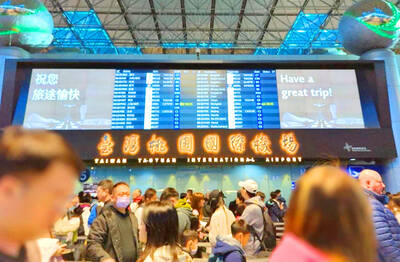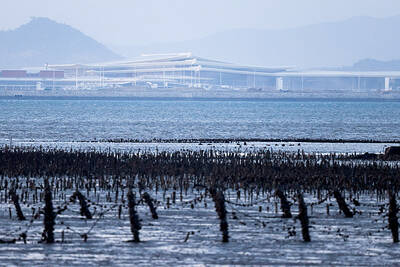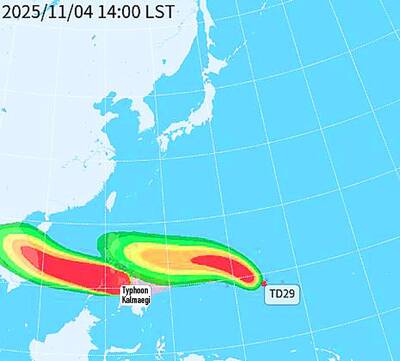Chinese Nationalist Party (KMT) Legislator Lu Hsueh-chang (呂學樟) yesterday echoed a call made by younger KMT members to drop the word “Chinese” from the party’s name.
Lu, who also doubles as a party Central Standing Committee member, said on Facebook that the KMT could have to “scrap the whole thing and restart from nothing” in order to “rise from its ashes.”
“The KMT has seen yet another rout in the Jan. 16 elections after a major defeat in the 2014 nine-in-one local elections. If the KMT does not undertake thorough party reforms and restructuring, and continues to play its ‘court politics,’ [last Saturday’s] avalanche-like defeat would not be the last the KMT would face,” Lu said.
The party mechanism of the 100-year-old party is out of date, failing the expectations of new politics and younger people, he said.
“Even the party name, Zhongguo Kuomintang (中國國民黨), is a contrast to what we are seeing in the society: The rise of local consciousness and the adversity against China,” he said.
“The KMT’s name is not unchangeable. From the Society for Regenerating China (興中會) in 1894, the Tungmenghui (同盟會) in 1905, the Kuomingtang in 1912, the Chunghwa Revolutionary Party in 1914 to finally the Zhongguo Kuomingtang [Chinese Nationalist Party] in 1919, the party has gone through four name changes,” Lu said.
A name change by dropping the word “Chinese” could therefore be a right move for the party to answer the calls for localization, he said.
The legislator also called for accustoming the party’s central beliefs and core values to the new era and the younger generation, streamlining the party’s internal structures, which have been the cause for the party’s “bureaucratic culture,” and reorganizing the Huang Fu-hsing (黃復興) faction, which has been idiosyncratic and a “sub-party” in itself that resists unified directive from the party’s center, by merging it with other party chapters.
“The party also has to establish an institutionalized system for cultivating young members, rather than bowing to the interests of certain factions or families,” Lu said.
Regarding party assets, Lu suggested transferring part of the assets to the state for establishing a “national sovereign fund” that could help Taiwanese businesspeople carry out strategic plans around the globe.
Lu did not seek re-election in the legislative election on Saturday last week, as he had lost the party primary to Cheng Cheng-chien (鄭正鈐), who was defeated by Democratic Progressive Party’s Ker Chien-ming (柯建銘) in Hsinchu City.

Three Taiwanese airlines have prohibited passengers from packing Bluetooth earbuds and their charger cases in checked luggage. EVA Air and Uni Air said that Bluetooth earbuds and charger cases are categorized as portable electronic devices, which should be switched off if they are placed in checked luggage based on international aviation safety regulations. They must not be in standby or sleep mode. However, as charging would continue when earbuds are placed in the charger cases, which would contravene international aviation regulations, their cases must be carried as hand luggage, they said. Tigerair Taiwan said that earbud charger cases are equipped

Foreign travelers entering Taiwan on a short layover via Taiwan Taoyuan International Airport are receiving NT$600 gift vouchers from yesterday, the Tourism Administration said, adding that it hopes the incentive would boost tourism consumption at the airport. The program, which allows travelers holding non-Taiwan passports who enter the country during a layover of up to 24 hours to claim a voucher, aims to promote attractions at the airport, the agency said in a statement on Friday. To participate, travelers must sign up on the campaign Web site, the agency said. They can then present their passport and boarding pass for their connecting international

UNILATERAL MOVES: Officials have raised concerns that Beijing could try to exert economic control over Kinmen in a key development plan next year The Civil Aviation Administration (CAA) yesterday said that China has so far failed to provide any information about a new airport expected to open next year that is less than 10km from a Taiwanese airport, raising flight safety concerns. Xiamen Xiangan International Airport is only about 3km at its closest point from the islands in Kinmen County — the scene of on-off fighting during the Cold War — and construction work can be seen and heard clearly from the Taiwan side. In a written statement sent to Reuters, the CAA said that airports close to each other need detailed advanced

WEATHER Typhoon forming: CWA A tropical depression is expected to form into a typhoon as early as today, the Central Weather Administration (CWA) said yesterday, adding that the storm’s path remains uncertain. Before the weekend, it would move toward the Philippines, the agency said. Some time around Monday next week, it might reach a turning point, either veering north toward waters east of Taiwan or continuing westward across the Philippines, the CWA said. Meanwhile, the eye of Typhoon Kalmaegi was 1,310km south-southeast of Oluanpi (鵝鑾鼻), Taiwan’s southernmost point, as of 2am yesterday, it said. The storm is forecast to move through central